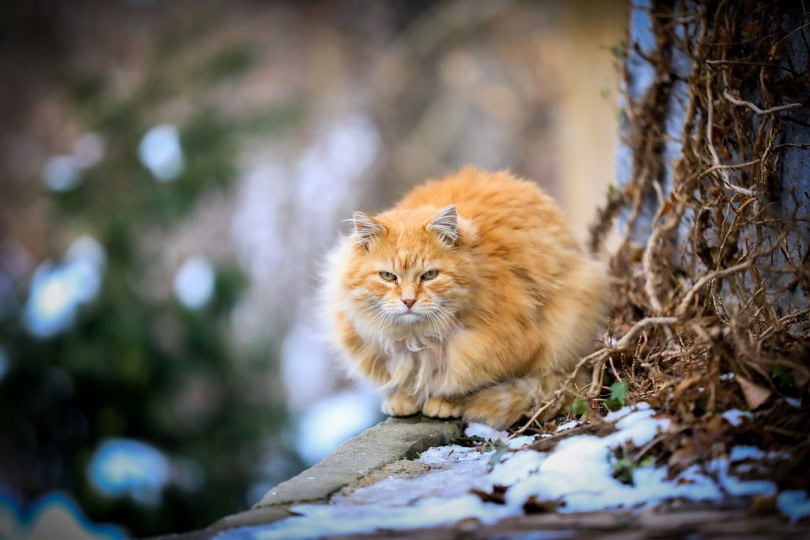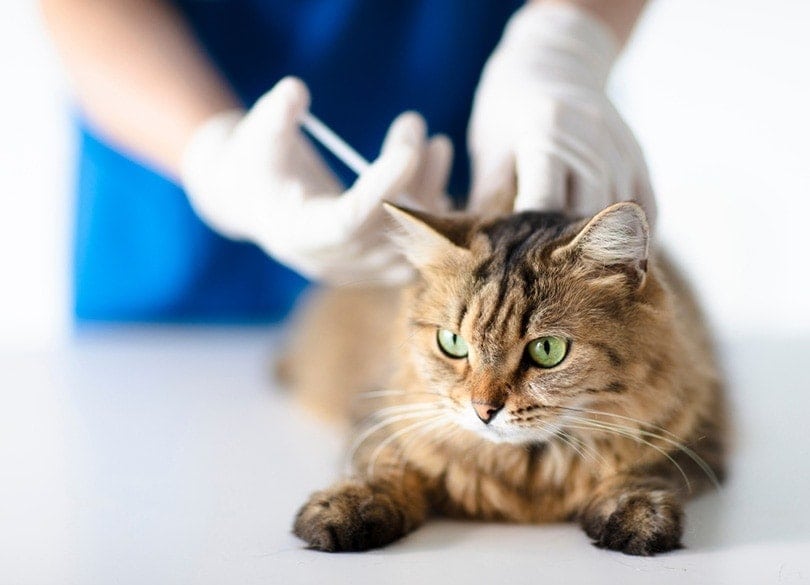VET APPROVED

The information is current and up-to-date in accordance with the latest veterinarian research.
Learn more »Click to Skip Ahead
Indoor cats have it made. They can lounge and nap all day with barely any disturbance, staying nice and cozy in the cold winter months. Outdoor cats have it a little worse, though. They have to seek shelter in the blustery weather to keep warm.
As winter approaches, it’s imperative to keep our pets safe from extreme temperatures. But our cats aren’t the only creatures at stake here. There are plenty of stray cats that could use some extra protection over the season.

Outdoor Cats in the Winter
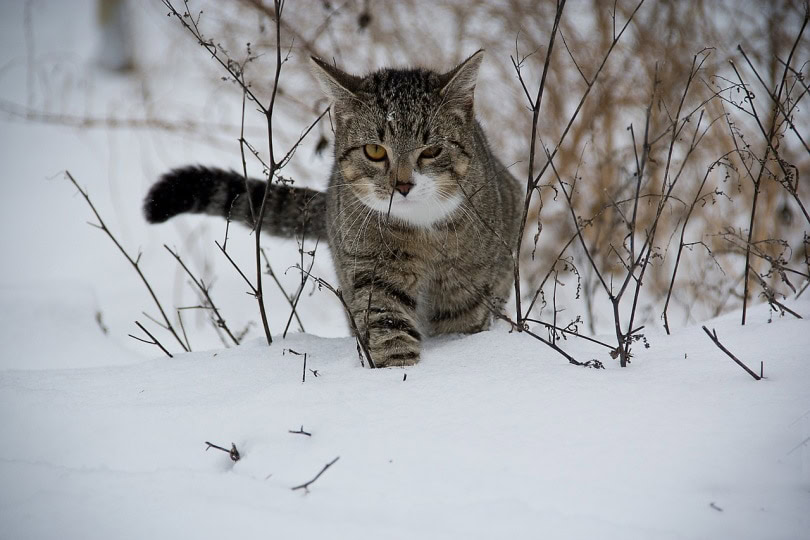
Many cats have thick double or even triple coats to protect them from outdoor elements. Likewise, those cats who are used to being outside tend to be more resourceful and can handle it much better than an escaped, spoiled, and otherwise helpless lost house cat.
However, the numbers are astronomical when you think of how many stray cats are in the United States alone. It’s estimated that around 58 million cats are strays based on numbers, but the actual number could fall between 35 and 60 million, and if we also consider the feral population, these numbers could surpass 100 million.
What Can Happen to Cats in the Cold?
It might seem silly, as cats have withstood the natural elements on farms and behind old buildings practically since domestication. However, feral cats know where to seek shelter, for the most part, they have learned how to survive a variety of conditions.
If your cat is tame and dependent on you, they may not know where to seek refuge to stay warm unless you provide it.

How Cold Is Too Cold?
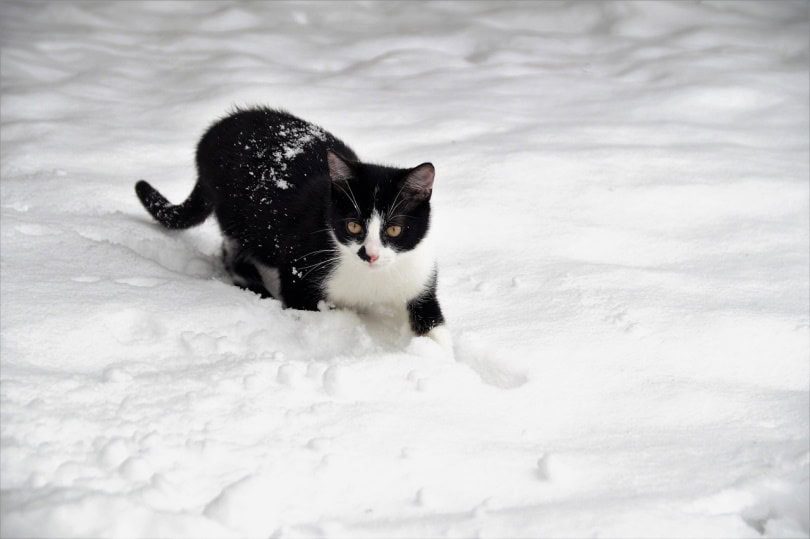
If you’re wondering whether cats can survive in the cold, they can. However, as temperatures get lower, they need a place to escape the elements.
Even though some cats are hardy in cold temperatures, cats shouldn’t be outside in 45-degree Fahrenheit weather or lower. If a cat is outside during freezing temperatures, which is 32 degrees F or less, it can suffer from significant issues like hypothermia or frostbite.
Hypothermia in Cats
Hypothermia is a serious condition where the body temperature significantly lowers due to extended time in very cold environments. It happens when your cat is exposed to freezing air.
- Lethargy
- Cold extremities
- Violent shaking
- Slow heart rate
- Shallow breathing
If untreated, eventually, the cat will slip into a coma. If you wish to help, keep in mind that their body temperature needs to be gradually warmed. You can use blankets, place them near a heat source, or use warm water but please avoid rubbing them and never use hot water! When hypothermia is severe, veterinarians can usually safely get the body temperature back up and treat any additional problems with immediate care.
Frostbite in Cats
Frostbite can often accompany cats that get hypothermia, but that’s not always the case. It can happen when certain parts of the skin get too cold, causing damage to the cells. Frostbite can occur when temperatures drop below 32 degrees F.
Your cat is especially susceptible to cold on paw pads and other vulnerable areas—like the ears and tail.
- Discoloration of the skin
- Coldness and dryness of the area
- Pain
- Swelling
- Blisters
- Black or dead skin
Frostbite can be very treatable. However, in extreme cases, it can lead to limb amputation. Many times, your vet will prescribe an antibiotic when treating frostbite as a preventive. Otherwise, the area can get infected, requiring further treatment.
- Related Read: Best Outdoor Cat Beds – Reviews & Top Picks

Ideas to Protect Outdoor Cats From the Winter
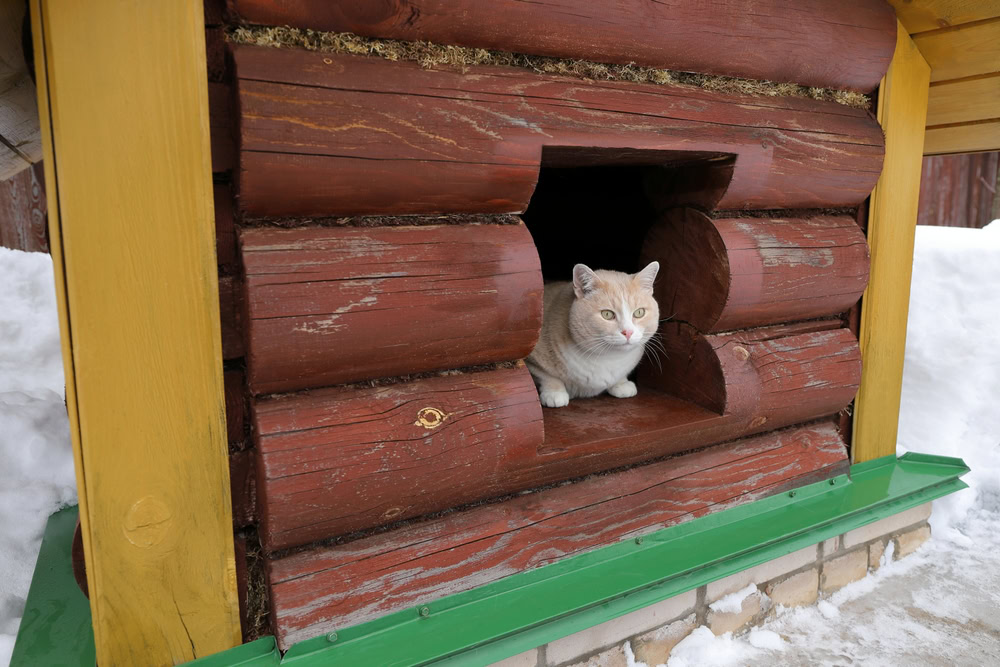
If you see cats out in the cold this season, there are a few things you can do to keep these felines safe. Keep in mind that if you own this outdoor cat, they should have access to a heated indoor building—whether it be a garage, barn, or home.
- Get a heated cat house. Companies make outdoor heated cat houses of all shapes and sizes. You can buy one that is as cheap or elaborate as you wish so you can keep the neighborhood strays warm.
- Put straw under your porch. If you have access to the underneath of your porch, you can put straw underneath. Straw is a miracle insulator that is cheap and easy to distribute. Staying in straw can help your cats maintain proper body temperature even in very cold weather.
- Let them stay in the garage or outbuilding. If you have a heated outdoor space or provide adequate insulation, let the strays stay in a garage or outbuilding. To reduce accidents, offer a litter box and allow them access outside as they need.
- Build an outdoor shelter. There are tons of DIY cat shelter ideas you can make out of many materials you might already have at home. It doesn’t have to be fancy, but it wouldn’t take long to whip together a little shelter for less fortunate neighborhood kitties.
- Take the cat(s) to a shelter. Shelters can take the animal in, scanning them for microchips and advertising to reach potential owners. If the cat can’t find their home after a point, they will generally put the animal up for adoption.
If you notice a cat in distress or if they seem wounded, make sure to try to get them to a local vet or rescue for further examination.

Conclusion
It doesn’t take too much time to make sure the outdoor kitties in your life stay warm this winter season. Remember, if you live somewhere with freezing winters, it’s imperative that they have shelter. If there is any way you can help out, even if it means taking them to a rescue facility, do what you can.
Those kitties will surely thank you for it!
See also:
- 5 Ways to Keep Your Outdoor Cat Safe from Other Cats
- Can Cats Catch Colds? Symptoms, Causes, and Care
- Can You Catch My Cat’s Cold? Here’s What Science Says
Featured Image Credit: ilyessuti, Pixabay
